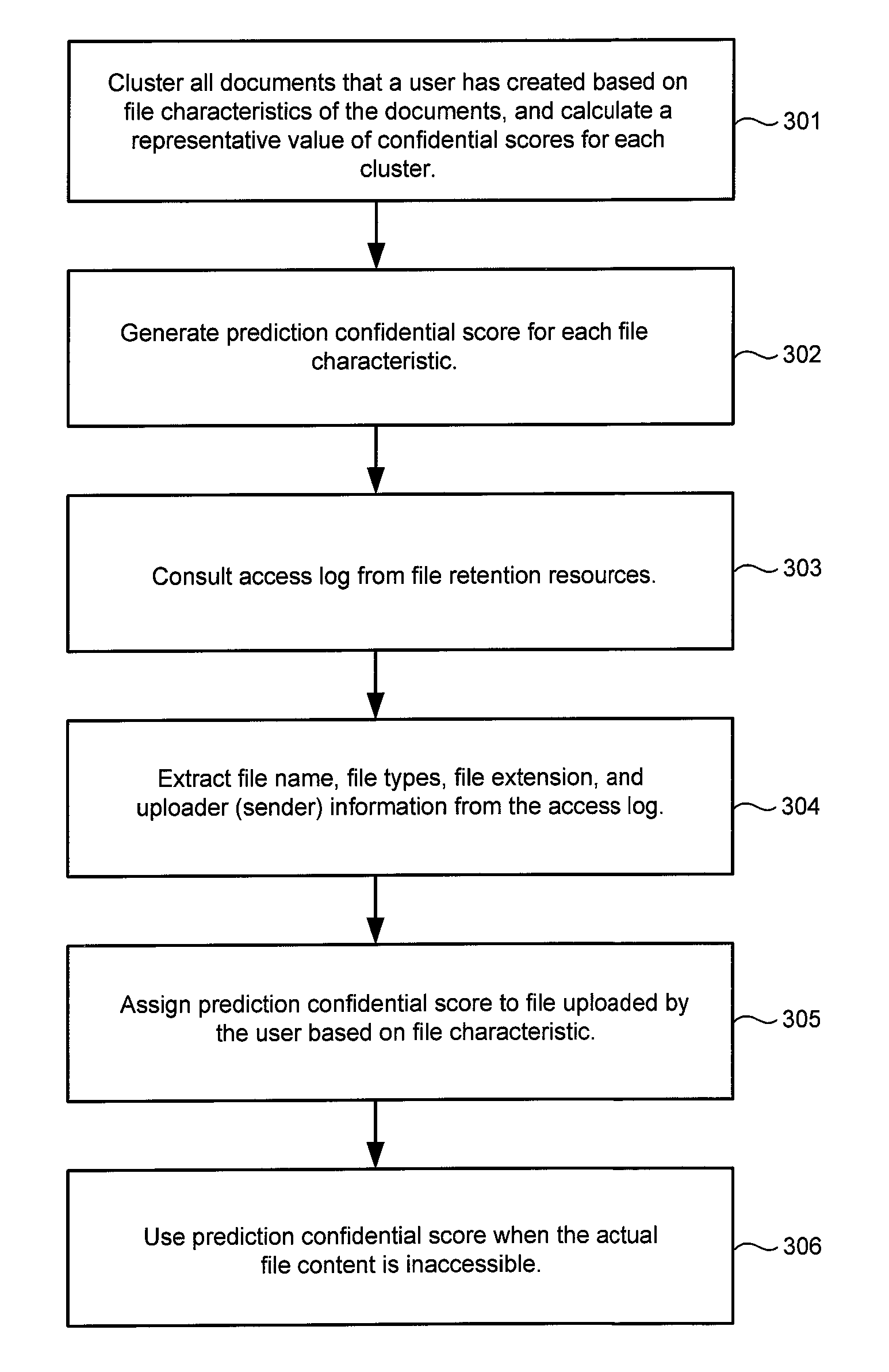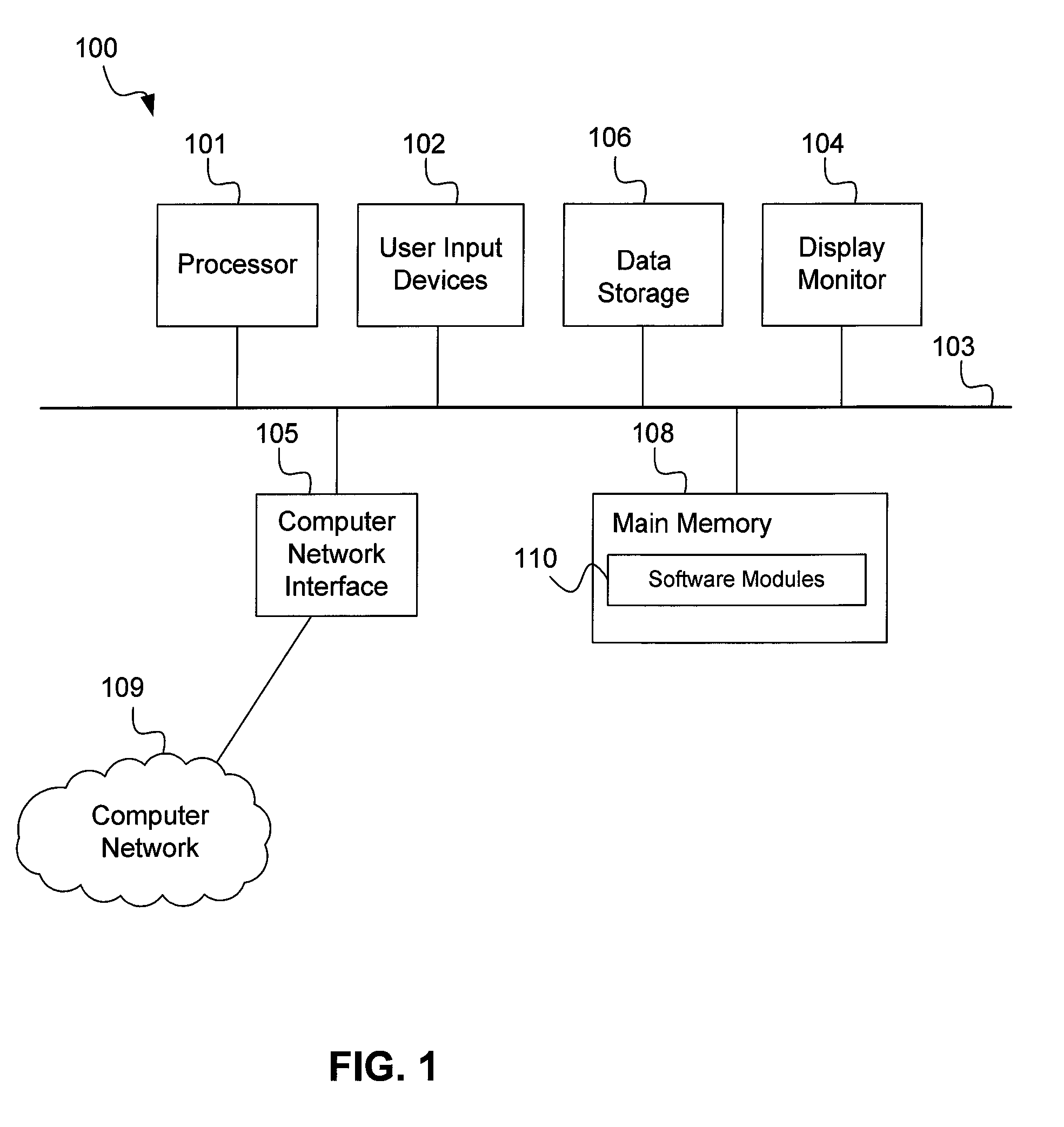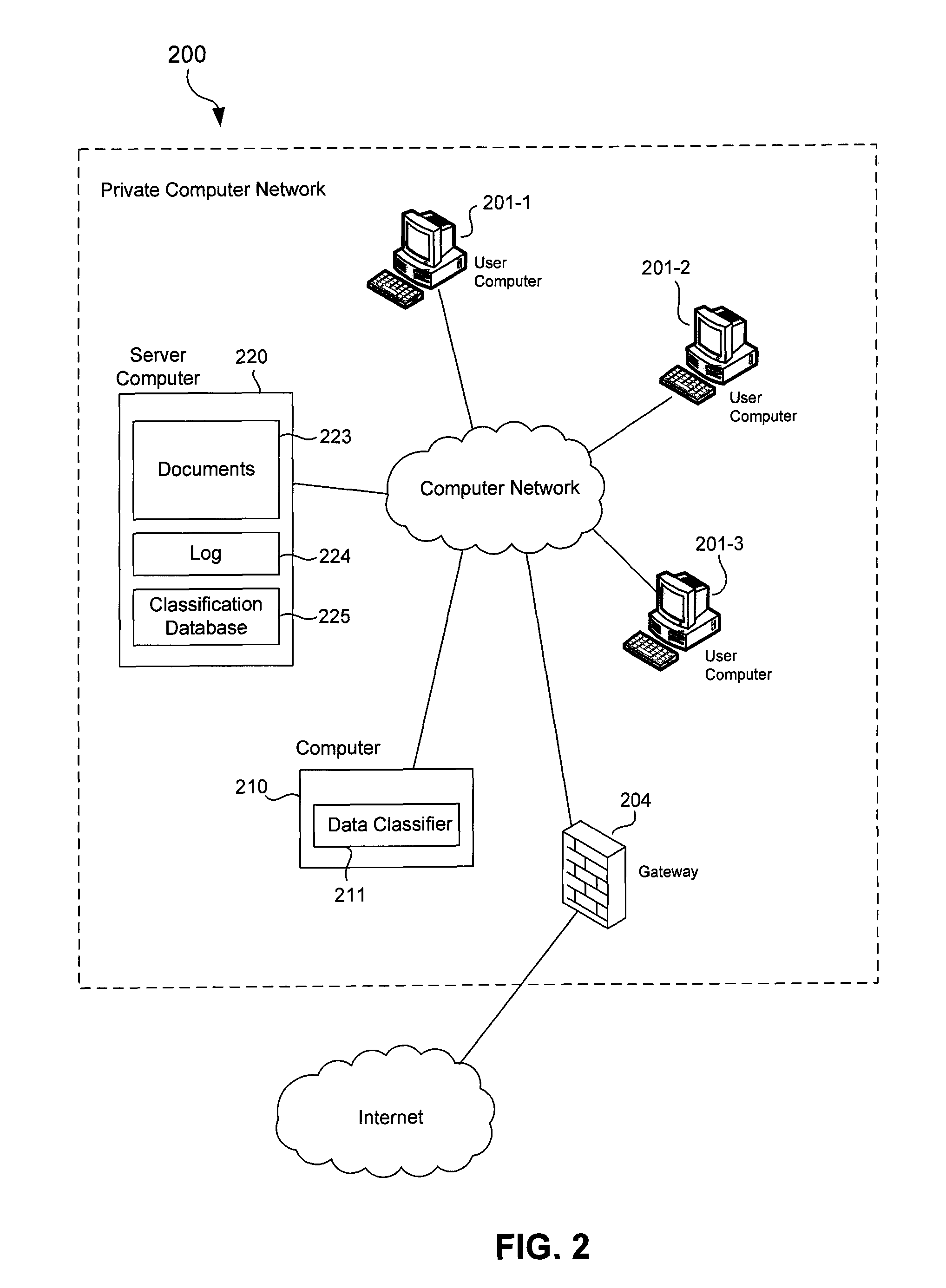Methods and systems for classifying computer documents into confidential levels using log information
a technology of computer documents and log information, applied in the field of computer security, can solve problems such as unworkable approaches and access to documents
- Summary
- Abstract
- Description
- Claims
- Application Information
AI Technical Summary
Benefits of technology
Problems solved by technology
Method used
Image
Examples
Embodiment Construction
[0016]In the present disclosure, numerous specific details are provided, such as examples of apparatus, components, and methods, to provide a thorough understanding of embodiments of the invention. Persons of ordinary skill in the art will recognize, however, that the invention can be practiced without one or more of the specific details. In other instances, well-known details are not shown or described to avoid obscuring aspects of the invention.
[0017]Referring now to FIG. 1, there is shown a schematic diagram of a computer 100 in accordance with an embodiment of the present invention. The computer 100 may be employed as any of the computing devices disclosed below. The computer 100 may have fewer or more components to meet the needs of a particular application. The computer 100 may include a processor 101, such as those from the Intel Corporation or Advanced Micro Devices, for example. The computer 100 may have one or more buses 103 coupling its various components. The computer 10...
PUM
 Login to View More
Login to View More Abstract
Description
Claims
Application Information
 Login to View More
Login to View More - R&D
- Intellectual Property
- Life Sciences
- Materials
- Tech Scout
- Unparalleled Data Quality
- Higher Quality Content
- 60% Fewer Hallucinations
Browse by: Latest US Patents, China's latest patents, Technical Efficacy Thesaurus, Application Domain, Technology Topic, Popular Technical Reports.
© 2025 PatSnap. All rights reserved.Legal|Privacy policy|Modern Slavery Act Transparency Statement|Sitemap|About US| Contact US: help@patsnap.com



